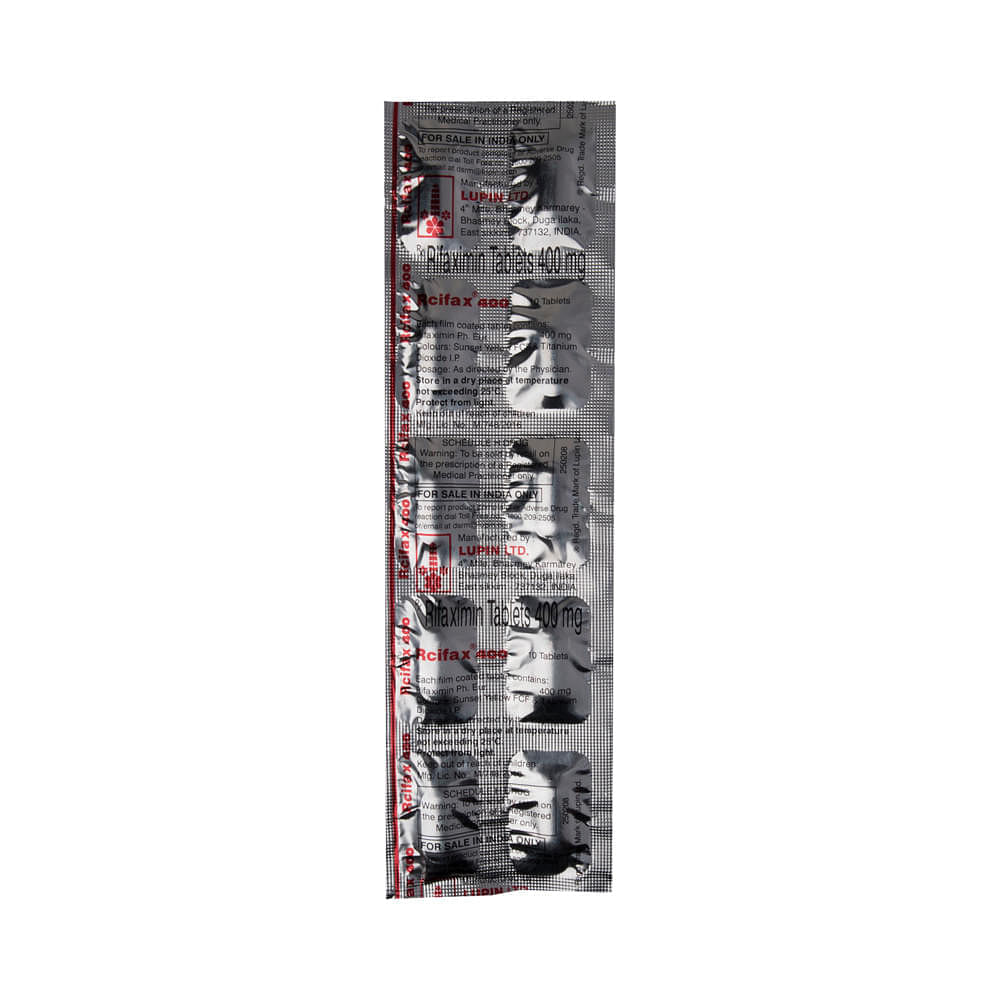
Curifix 400mg Tablet
Manufacturer
Alvio Pharma
Salt Composition
Rifaximin (400mg)
Key Information
Short Description
Curifix 400mg Tablet is an antibiotic that treats hepatic encephalopathy, a condition in which the liver fails to remove harmful toxins from the blood, leading to brain damage. It is also used to treat infectious diarrhea.
Dosage Form
Tablet
Introduction
This medicine can be used alone or in combination with other medicines. It may be taken with or without food, preferably at the same time each day. It should be used in the dose and duration as advised by the doctor. Take it at the same time each day to get the most benefit and you should keep on taking this medicine for as long as you are prescribed. Stopping it early may make the infection to come back and harder to treat. Some people may develop side effects like vomiting, headache, dizziness, nausea, rashes, joint pain, and depression. These side effects are usually temporary and go away during treatment as your body adjusts to the medicine. Consult your doctor if these side effects bother you or will not go away. Your urine may become reddish in color due to this medicine. But it is normal and harmless. Before starting treatment with this medicine, you should tell your doctor if you are pregnant, breastfeeding or suffering from any liver, kidney or heart problems or if you are allergic to any medicine.
Directions for Use
Take this medicine in the dose and duration as advised by your doctor. Swallow it as a whole. Do not chew, crush or break it. Curifix 400mg Tablet may be taken with or without food but it is better to take it at a fixed time.
Safety Information
Side Effects
No common side effects listed.
Alcohol Warning
It is not known whether it is safe to consume alcohol with Curifix 400mg Tablet. Please consult your doctor.
Breastfeeding Warning
Curifix 400mg Tablet is probably safe to use during breastfeeding. Limited human data suggests that the drug does not represent any significant risk to the baby.
Pregnancy Warning
Curifix 400mg Tablet may be unsafe to use during pregnancy. Although there are limited studies in humans, animal studies have shown harmful effects on the developing baby. Your doctor will weigh the benefits and any potential risks before prescribing it to you. Please consult your doctor.
How it works
Curifix 400mg Tablet is an antibiotic. It works by killing the ammonia-producing bacteria in the digestive tract. This treats your infection and relieves symptoms of hepatic encephalopathy (agitation, confusion, muscle problems). This also helps reduce the recurrence of episodes of hepatic encephalopathy.
Quick Tips
Curifix 400mg Tablet reduces the risk of overt hepatic encephalopathy (HE) recurrence in patients with liver disease. It may cause reddish discoloration of urine. This is normal and harmless. Stop taking Curifix 400mg Tablet and inform your doctor if you have severe diarrhea during or after using Curifix 400mg Tablet. Finish the full course of the medication even if you feel better.
Related Medicines

Rifagut 400 Tablet

Rcifax 400 Tablet

Sibofix 400 Tablet

Rifaxigress 400 Tablet

Setsibo 400 Tablet

Rifmin 400mg Tablet

Rifaser 400mg Tablet

Tradifax 400mg Tablet

Rossgut 400mg Tablet

Rifadac 400 Tablet
Frequently asked questions
Should I take Curifix 400mg Tablet with food?
Yes, Curifix 400mg Tablet can be taken orally with or without food. Take it as prescribed by your doctor for the exact period of time.
What does Curifix 400mg Tablet do for the liver?
Curifix 400mg Tablet works by slowing down the growth of bacteria in the gut, decreasing the symptoms in cases of liver disease. This helps to reduce the build-up of toxins in the body, as an increased bacterial load can lead to more toxins traveling through the bloodstream and reaching the brain which may cause abnormal brain function.
Can Curifix 400mg Tablet cause weight gain?
While Curifix 400mg Tablet is generally not associated with significant weight gain, if you notice any unexpected increase in your weight, it's important to consult your doctor to determine the possible underlying causes.


